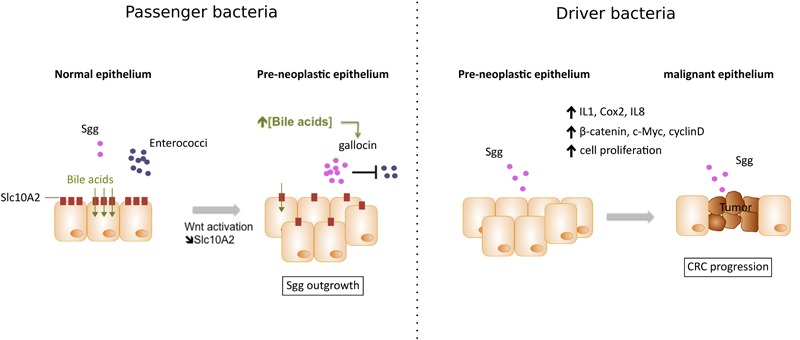FIGURE 1.

Two working models explaining Sgg association with colorectal cancer (CRC). (1) Sgg as a passenger bacterium: In pre-neoplastic epithelium, activation of the Wnt pathway leads to the downregulation of bile acids transporter Slc10A2 resulting in accumulation of bile acids- which in turn activates a specific “bacteriocin” enabling Sgg to kill related commensals (e.g., Enterococci). This local microbial imbalance can contribute to the development of CRC. (2) Sgg as a driver bacterium: High colonization of Sgg in pre-malignant epithelium can induce specific inflammatory responses (IL-1, COX-2, and IL-8) and increased cell proliferation associated with upregulation of β-catenin levels and its oncogenic downstream targets (c-Myc and cyclin D), thus accelerating transformation from pre-malignant to malignant epithelium.
